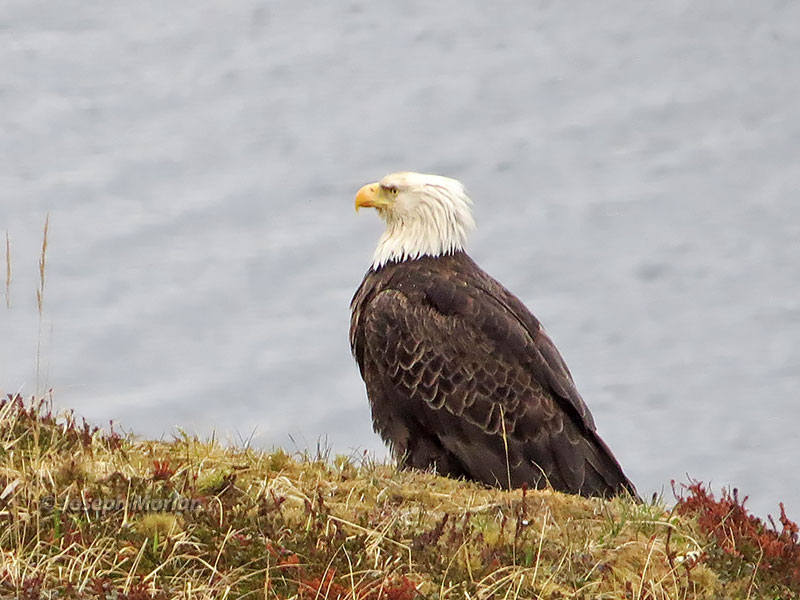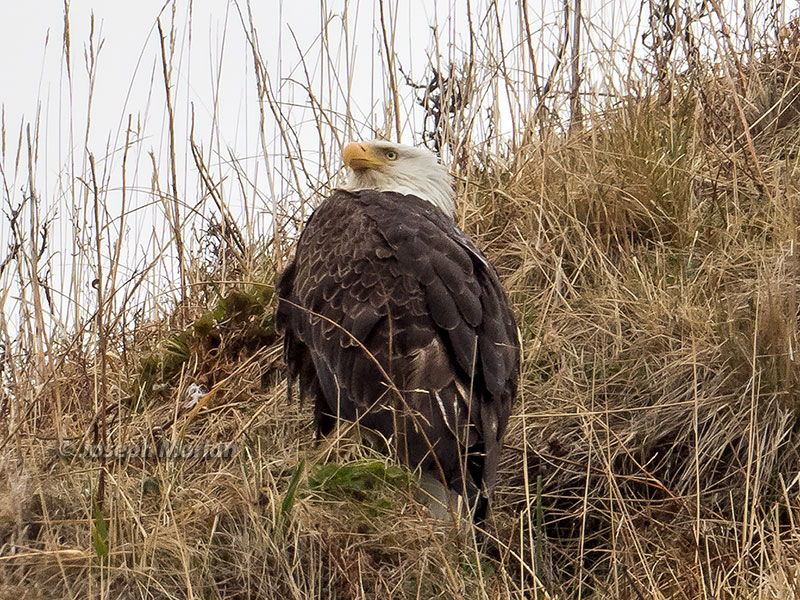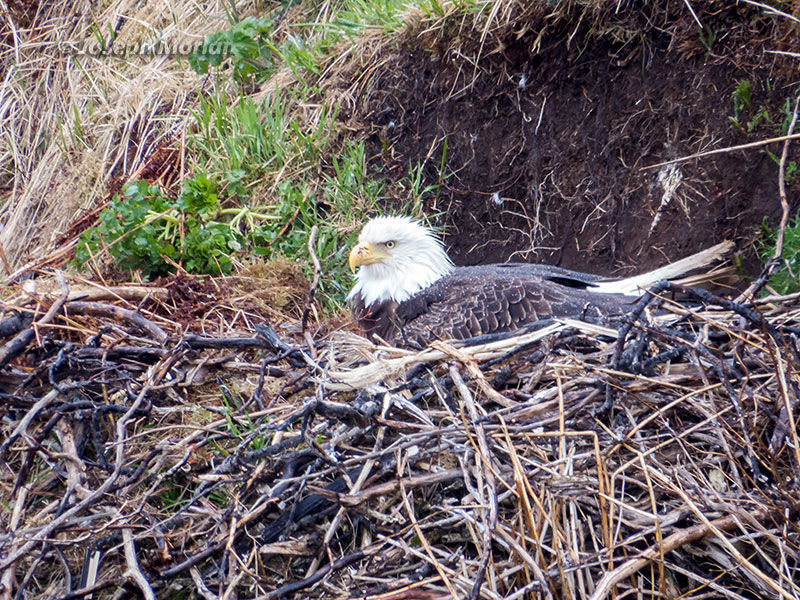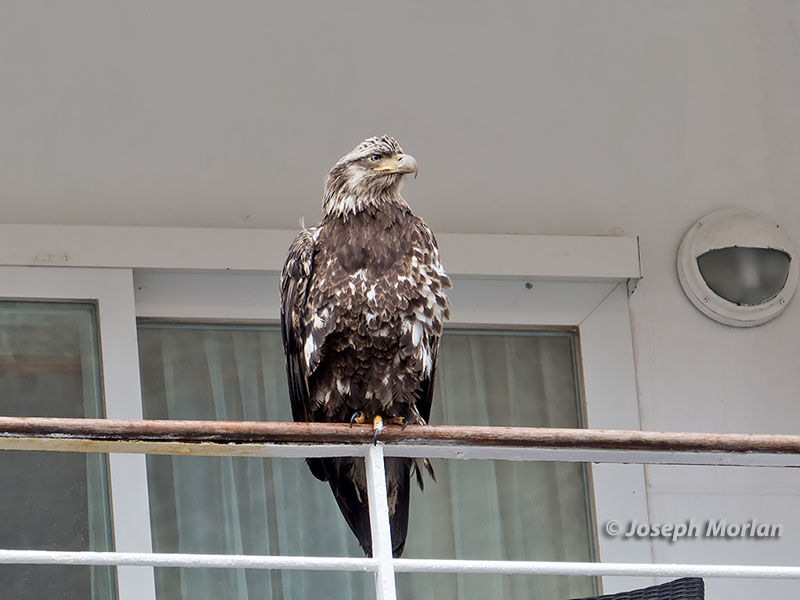




Formerly imperiled by shooting and DDT contamination, this iconic symbol of the United States has mostly recovered and continues to expand its range. It was delisted in 2007. The BNA account uses the name H. l. alascanus (Townsend, 1897) for the larger northern subspecies, but the name H. l. washingtoniensis (Audubon, 1827) has priority. The two races broadly overlap in the non-breeding season. This (bottom) is an immature perched on a railing of one of the ship's veranda staterooms. Although it is illegal to do so, people were feeding the eagles at the dock and the birds were quite tame. Canon PowerShot SX50 HS.
References:
Buehler, David A.(2000).Bald Eagle (Haliaeetus leucocephalus), The Birds of North America (P. G. Rodewald, Ed.). Ithaca: Cornell Lab of Ornithology; Retrieved from the Birds of North America: https://birdsna.org/Species-Account/bna/species/baleag
White, C.M., Kirwan, G.M. & Marks, J.S. (2017). Bald Eagle (Haliaeetus leucocephalus). In: del Hoyo, J., Elliott, A., Sargatal, J., Christie, D.A. & de Juana, E. (eds.). Handbook of the Birds of the World Alive. Lynx Edicions, Barcelona. (retrieved from http://www.hbw.com/node/52987 on 2 July 2017).